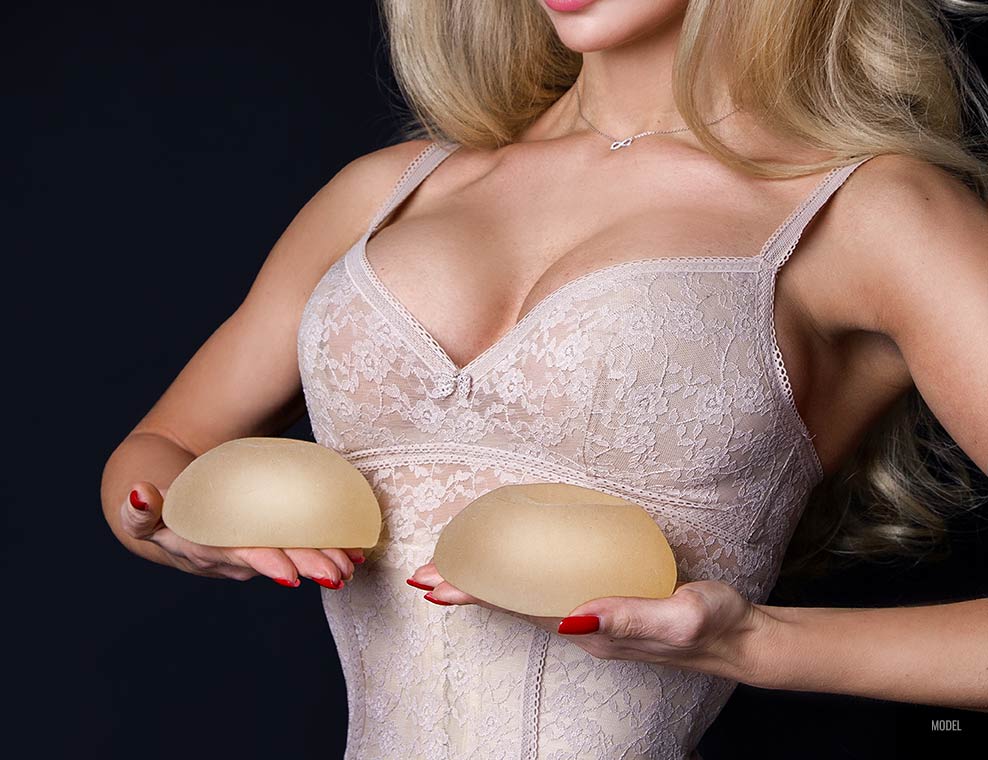5 minute read

Breast augmentation is a highly customizable cosmetic procedure designed to enhance the size, shape, and symmetry of a woman’s breasts. From selecting the appropriate implant type, size, and projection to determining the optimal placement and incision type, several factors are involved when customizing your breast augmentation to achieve your desired results. In this blog, we’ll explore each aspect of customization in detail to help you make informed decisions and achieve the outcome you envision.
Breast Implant Type
Once you’ve made the exciting decision to get breast augmentation surgery, the next step is making sure the procedure fulfills your desire. One of the first decisions to make when customizing your breast augmentation is choosing the right implant type. There are two primary types of breast implants: saline and silicone. Saline breast implants consist of a silicone shell filled with sterile saline solution, while silicone breast implants are filled with silicone gel that closely mimics the feel of natural breast tissue. Each type offers distinct advantages and considerations:
- Saline implants: Saline implants are filled after insertion, allowing for adjustable volume and smaller incisions. They may be more suitable for women with asymmetrical breasts or those seeking a slightly larger size correction.
- Silicone implants: Silicone implants offer a more natural look and feel with a softer, more cohesive gel filling. They are less likely to ripple or wrinkle and may be preferred by patients seeking a more natural result.
Breast Implant Size
Choosing the right implant size is crucial for achieving your desired breast augmentation results. Factors to consider when selecting implant size include your body frame, breast width, chest wall dimensions, aesthetic goals, lifestyle, and potential athletic goals.
A reputable plastic surgeon will help you choose a size that compliments your figure and provides your desired degree of enhancement while maintaining proportionality and balance.
Breast Implant Placement
Implant placement refers to how the breast implants are positioned. The two primary placement options are submuscular (under the chest muscle) and subglandular (over the chest muscle).
Each placement technique has its advantages and considerations:
- Submuscular placement: Submuscular placement may offer a more natural-looking result with reduced risk of capsular contracture (scar tissue formation around the implant). It may also provide more coverage over the implant, making it less visible, particularly in women with very little breast tissue. Certain athletes may prefer this placement option for its added support. However, women bodybuilders interested in breast enhancement may be advised to avoid submuscular placement.
- Subglandular placement: Subglandular placement may result in a faster recovery with less postoperative discomfort. It may also provide a more predictable outcome, particularly in women with adequate breast tissue and minimal sagging. This placement option can also provide more dramatic results.
Breast Implant Projection
Implant projection refers to the forward projection or profile of the breast implants. The three primary projection options are low, moderate, and high profile, each offering different degrees of projection and fullness.
The choice of implant projection depends on factors such as chest dimensions, breast base width, and desired aesthetic results. Your plastic surgeon will consider your anatomy and aesthetic goals to recommend the most suitable projection for your breast augmentation.
Implant Incision Type
The incision type used for breast augmentation depends on various factors, including implant type, size, placement, and patient preference. The three primary incision options for breast augmentation are:
- Inframammary: This incision type is made in the natural crease beneath the breast, allowing for direct access to the breast pocket and precise implant placement. It offers excellent visibility and versatility for accommodating different implant sizes and types.
- Periareolar: This incision option is made around the edge of the areola, where the darker pigmented skin meets the lighter breast skin. It provides discreet scarring that blends well with the natural transition between the areola and breast skin.
- Transaxillary: Also an integral part of a “scarless breast augmentation,” This incision is made in the natural crease of the armpit, allowing for implant placement through a tunnel that leads to the breast pocket. It offers minimal scarring on the breast and avoids any incisions on the breast tissue. Transaxillary incisions are best used with saline and small silicone implants.
Adding a Breast Lift
Some women may want to address breast laxity (sagging) as well as breast size due to weight loss, pregnancy, or aging. Combining breast augmentation with a breast lift can correct a droopy or deflated breast appearance and ensure the best results.
Customizing your breast augmentation should be a collaborative process between you and your plastic surgeon. This way, selecting the breast implant type, size, placement, projection, and incision type will align with your cosmetic goals, anatomical considerations, and lifestyle preferences.
By carefully considering each aspect of customization and discussing your options with a board-certified plastic surgeon, you can achieve personalized results that increase your confidence and satisfaction with your appearance.
Customizing Your Breast Augmentation in San Francisco, CA
Dr. Kimberly Henry can help you determine the best breast implant options to achieve your desired results. Our board-certified plastic surgeon understands the importance of feeling good about the way your breasts look and is committed to providing the highest level of care. To learn more, call our San Francisco, California office at (415) 997-0918 to schedule your in-depth consultation.
Dr. Henry also serves Greenbrae, Davis, and Petaluma.

